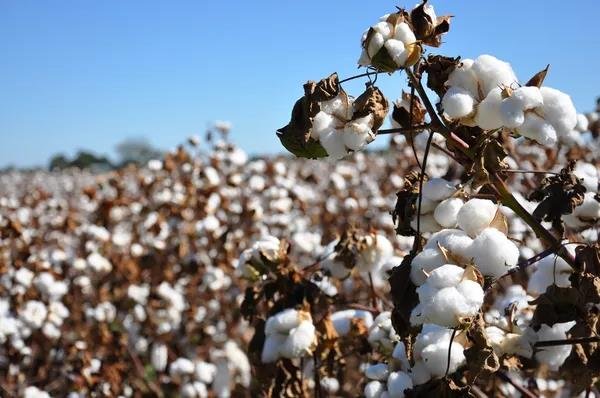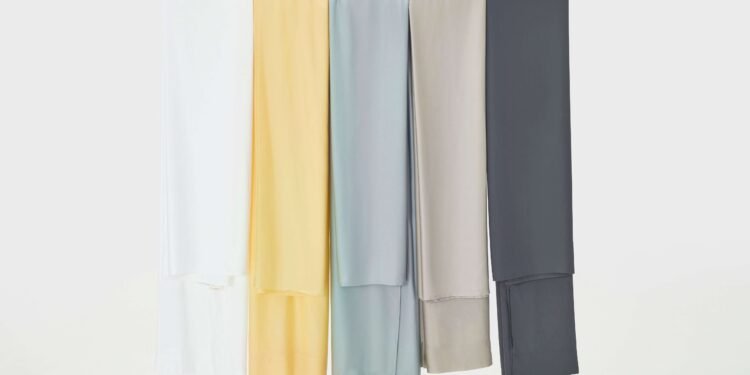When searching for the perfect home textile, we often hesitate between Tencel and Cotton. Both materials are popular for their unique properties, but they each have their own strengths. This article is designed to provide an in-depth comparison of these two popular materials to help you make an informed decision, especially when considering the purchase of home furnishings such as a tencel duvet cover.
What is Tencel
Tencel, known as Lyocell, is a recycled fiber made from wood pulp. The fiber is produced in an environmentally friendly and sustainable process, often using wood from sustainably planted forests, such as eucalyptus and pine. Unlike traditional man-made fibers, Tencel is produced using an organic solvent called NMMO (N-Methylmorpholine N-oxide), and almost all of the solvent is recycled and reused in the production process, which greatly reduces the impact on the environment. Due to its environmentally friendly production method and comfortable wearing experience, Tencel has become a popular choice in the textile market.
Types of Tencel
Although Tencel is the generic name for Lyocell fiber, there are some specific types of Tencel on the market, which are distinguished mainly based on the source of the raw material and differences in processing:
- Standard Tencel: made from conventional wood pulp as raw material through a standard solvent spinning process, suitable for a wide range of textiles.
- Tencel™ Lyocell: This is a brand-specific Tencel product, produced by the Austrian company Lenzing AG. Tencel™ Lyocell is known for its high environmental standards and premium fiber quality.
- Bamboo Lyocell: Lyocell fibers using bamboo as a raw material combine the natural properties of bamboo with the production process of Lyocell fibers and are popular for their environmentally friendly and antimicrobial properties.
Main Characteristics of Tencel
As a new textile material, Tencel possesses many compelling features:
- Environmental protection and sustainability: its production process is virtually pollution-free, the solvents used are recyclable, and the raw materials come from sustainable forests, which is in line with current environmental trends.
- Softness and Comfort: Tencel fiber is smooth and delicate, with a soft handfeel, making it ideal for intimate apparel and bedding.
- Strength and durability: despite its softness, Tencel fiber is strong, wearable and durable, and not easily deformed.
- Moisture absorption and breathability: Tencel has good moisture absorption and breathability, which can effectively regulate the humidity of the skin and keep the wearer dry and comfortable.
- Wrinkle and Shrinkage Resistance: Compared with other fibers, Tencel is more resistant to the formation of wrinkles and does not shrink easily after washing.
What is Cotton?
Cotton, a familiar natural fiber, is actually the seed fiber of the cotton plant. This fiber is widely used in textile manufacturing because of its softness, moisture absorption, and breathability. One popular product is the organic cotton duvet cover, which combines the natural advantages of cotton with environmentally friendly growing methods. Cotton has a growth cycle of about a few months from sowing to harvest, and its mature lint is separated from the cotton seed. Cotton is grown all over the world, but the best environment for its growth is in warm and sunny areas, for example, in the Xinjiang region of China.

Types of Cotton
There are many different types of cotton, and different types have different properties and uses. The most common types include:
- Egyptian Cotton: This type of cotton is known for its extra-long fibers, and these fibers provide superior softness and moisture-wicking properties, making fabrics made from Egyptian cotton exceptionally soft and durable. Fabrics made from Egyptian cotton are often smoother, finer, and more breathable, so it’s considered an ideal material for high-end bedding and intimate apparel.
- Pima Cotton: Similar to Egyptian cotton, Pima cotton is known for its extra-long fibers and exceptional softness. Produced in the southwestern United States, this cotton has high fiber strength, durability and wrinkle resistance. Products made from Pima cotton have a high sheen and a delicate feel, making them suitable for high-quality garments and bed linens.
- Yapland Cotton (Upland Cotton): As the most common type of cotton, Yapland Cotton accounts for about 90% of global cotton production. Its fibers are shorter than those of Egyptian and Pima cotton, but its wide adaptability, consistent quality and relatively affordable price make it suitable for a wide range of standard cotton products.
- Organic Cotton (Organic Cotton): Organic cotton is grown without the use of any chemical fertilizers and pesticides, and is committed to reducing its impact on the environment. This type of cotton cultivation helps to protect soil health and reduce water consumption. Organic cotton products are especially suitable for environmentally conscious consumers, while being friendly to sensitive skin.
Benefits of Cotton
Cotton has several significant advantages as a textile material:
- Comfort: The natural softness of cotton makes it very pleasant to the touch and suitable for wearing directly against the skin. Its softness and skin-friendliness make it the material of choice for clothing and bedding.
- Moisture Absorption and Breathability: Cotton has excellent moisture absorption and breathability, which effectively absorbs sweat generated during body temperature regulation, keeping the skin dry and reducing the feeling of dampness and discomfort.
- Durability: Cotton products are resistant and easy to maintain, even after many washes can maintain its shape and texture, durability makes it an affordable choice.
- Eco-friendly: Organic cotton, in particular, is grown in an environmentally friendly way, making it suitable for consumers seeking a sustainable lifestyle.
- Anti-allergenic: as a natural material, cotton is free of synthetic chemicals, making it especially safe for allergy-prone skin, reducing the risk of skin irritation and allergic reactions.
Tencel vs Cotton
When we compare Tencel and Cotton, it is important to consider their differences in terms of comfort, durability, environmental friendliness, price and ease of care.
- Comfort: Tencel is known for its exceptional softness and smoothness to the touch, providing the ultimate comfort experience for the wearer. In contrast, cotton, while also comfortable, has a more traditional and natural feel.
- Durability: Cotton is slightly better in terms of durability, especially high-quality cotton that has been specially treated, such as Egyptian cotton or Pima cotton. Although Tencel is durable, it may be slightly inferior in frequent washing and long-term use.
- Environmental protection: Tencel in the production process almost no waste, the use of solvents can be recycled, so in the environmental performance. Organic cotton is also an environmentally friendly option, especially when grown without the use of chemical fertilizers and pesticides.
- Price: Tencel is usually more expensive, reflecting the environmental technology and high quality standards of its production process. In contrast, cotton products are usually more affordable, especially the non-organic variety.
- Ease of care: Cotton is relatively easy to care for, washable and wearable, and suitable for regular washing. Tencel, on the other hand, although also machine washable, may require more careful care to maintain its fiber integrity and luster.
- Bed linen: Tencel bed linen is suitable for consumers seeking the ultimate in softness and luxury, while cotton bed linen is suitable for consumers who prefer traditional comfort.
- Clothing: Tencel is suitable for high-end clothing because of its smooth drape and elegant luster. Cotton clothing is suitable for daily casual wear, especially in the hot summer.
- Towels: Cotton towels are highly absorbent, durable and easy to clean, making them the first choice for bathroom products. Tencel towels offer a softer and more luxurious alternative.
Conclusion
If you are on a budget, traditional cotton products may be a more economical choice. For consumers willing to invest in high-quality and eco-friendly products, consider Tencel. If environmental protection is a major consideration, both Tencel and organic cotton are good choices. For sensitive skin, it is recommended to choose Tencel or organic cotton products without chemical treatments. All in all, Tencel and cotton have their own advantages and limitations. The choice of material should be based on individual needs, preferences, and available budget. Regardless of the choice, understanding the properties of each material is key to making an informed decision.












